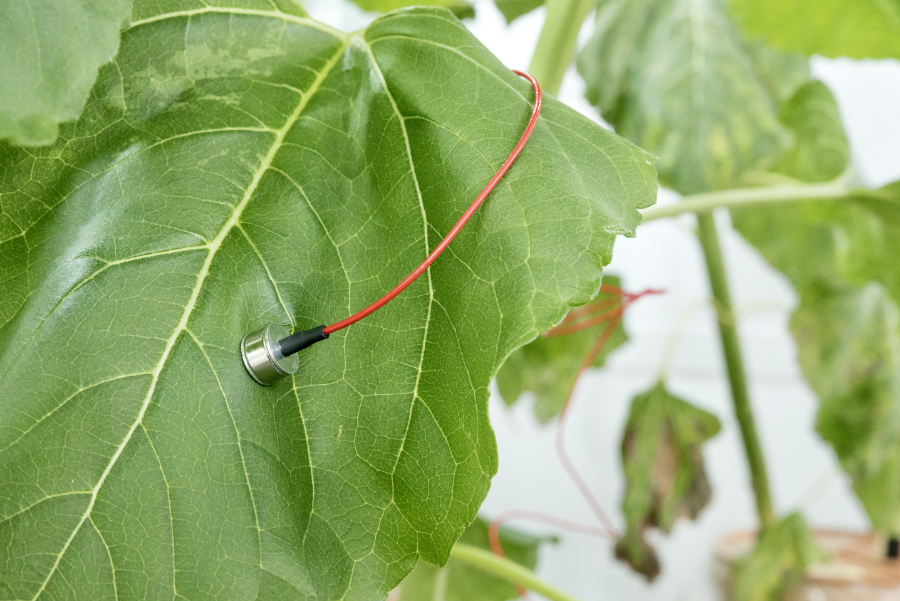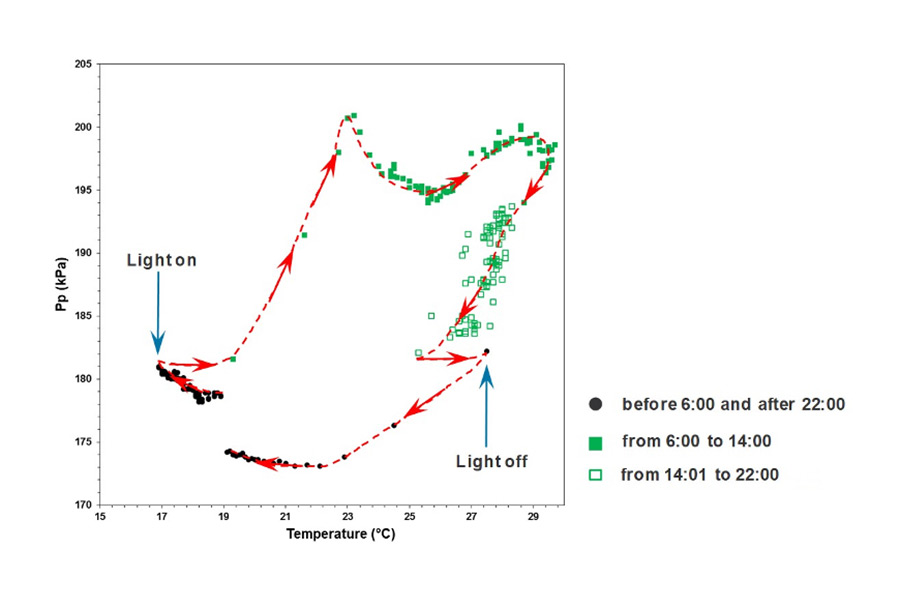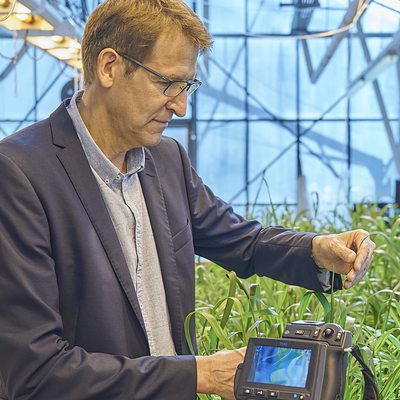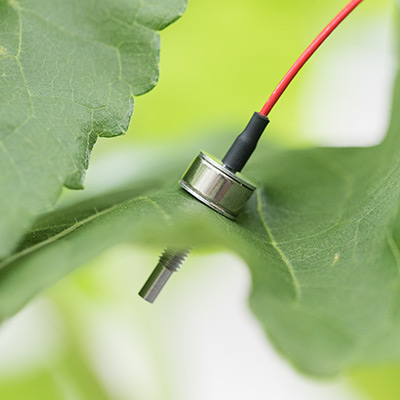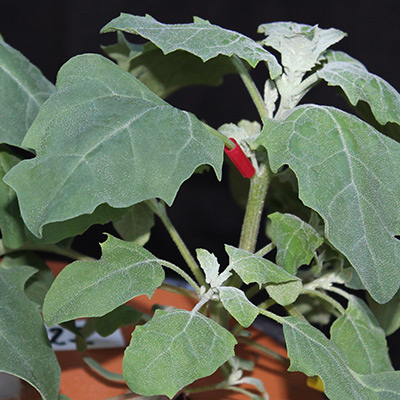Research
The leaf patch clamp pressure probe (LPCP) was used to investigate the hydraulic mechanisms involved in the dynamics of plant water relations, namely plant responses to drought stress. Compared to other methods that measure plant water status, the LPCP offers advantages as it monitors plant water status continuously.
The patch clamp pressure output, Pp, resulting from two small magnets applied on a leaf or a suitable plant part is inversely related to the leaf patch turgor pressure, Pc, which relates to the tissue water content. Hence, the ability to observe the relative changes in Pc non-invasively and continuously makes it possible to follow the dehydration/rehydration kinetics, i.e., the internal redistribution of water, over diel scales in response to treatments.
Different plant species were submitted to varying water supply under different environmental conditions. Experiments were carried out in a growth chamber under controlled conditions and in a greenhouse with monitored temperature and relative humidity. Drought stress on the plants in hydroponics was simulated by using polyethylene glycol 6000 in the nutrient solution.
First results indicate that under varying water supply regimes plants redistribute water within their tissues, prioritizing different water needs between older and younger tissues. Well hydrated plants show a hysteretic relationship between Pp and temperature. As the day advances, temperature rises and Pp increases up to a maximum reflecting the decrease in turgor due to transpiration. As temperature decreases after noon so does transpiration, which causes Pp to decrease resuming to levels similar to those observed previously at dawn. The shape and area defined by the hysteresis loop relate to the kinetics and hydration state of the plant, thus drought stress level.
The continuous monitoring of the patch clamp pressure output, Pp, proves to be an efficient way of assessing plant water status as well as assisting on irrigation and water management.




